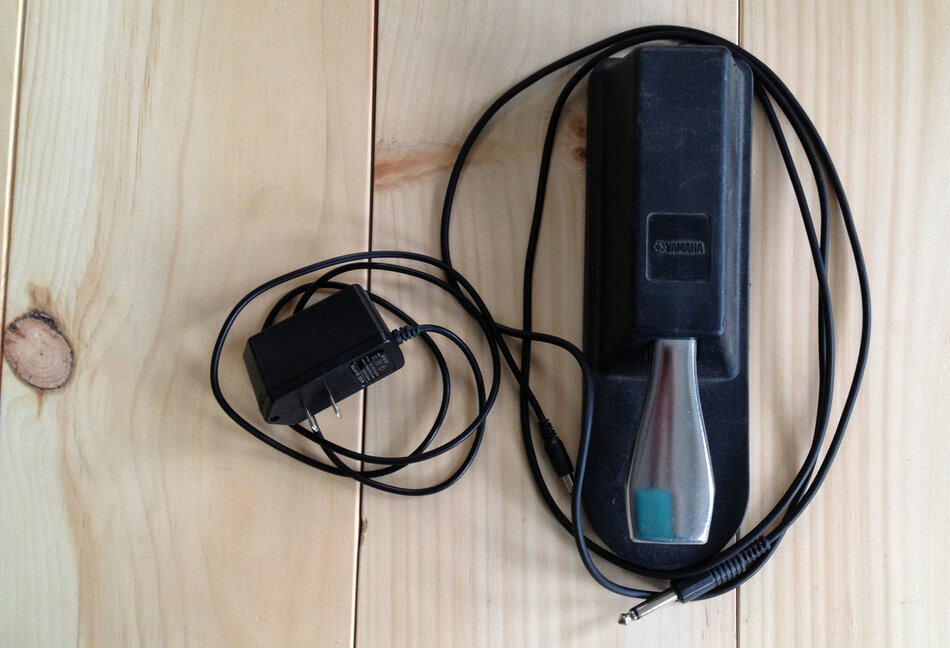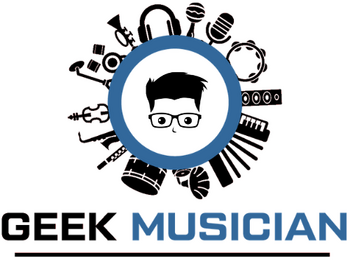
The sustain pedal is undoubtedly one of the most popular foot pedals available. They are good for one particular thing – holding notes for longer periods. But can the sustain pedal do other things? Like using it as an expression pedal, for example. I had always been curious about this question, so I finally took some time to research, and here is what I found.
Sustain pedals cannot be used as expression pedals. Most sustain pedals are designed to send ON/OFF momentary messages. However, there are some sustain pedals that send Continuous Control messages from 0 to 127, just like expression pedals do. This means for those pedals, although not ideal, can be used as expression pedals.
Table of Contents
To fully understand this, you need to know how the expression pedal works and how different it is from the sustain pedal. I’ll also talk about the two most popular sustain pedals that can be used as expression pedals. And finally, I’ll show you some unique and fun ways you can use your sustain pedal besides holding notes.
How Expression Pedals Work
Let me summarize this whole section in one sentence — The expression pedal is a rotary encoder for your foot.
The expression pedal is a MIDI device that outputs a MIDI CC value from 0 – 127, depending on the position of the pedal. The 0 positions, that is, the position where the expression pedal sends out a CC value of 0, is popularly known as the heel position. Similarly, the position where the pedal sends a value of 127 is known as the toe position. Adjusting your foot in between the heel and toe position gives you different values between 0 and 127.
This is why the expression pedal is known as a continuous pedal because it gives you a different CC value continuously, depending on how your foot is adjusted on the pedal.
The expression pedal is useful in a dozen ways. For digital keyboards, synthesizers, and DAWs, they can be assigned to control just about anything. You can assign the expression pedal to control the volume of sounds, the Dry/Wet knob on Reverb and Delay effects, control the Wah effect on your digital clavi, and control the cutoff frequency on a synthesizer, or anything you can possibly think of.
The most popular use case I’ve found people using expression pedals is to control the volume of a patch on their keyboard or as a filter cutoff.
This makes the expression pedal a very useful tool. Having the ability to control a parameter with your foot as a musician is awesome because most of the time, both hands will be busy playing our instruments, especially during a live performance.
Now let’s take about the sustain pedal and how it differs from the expression pedal.
How a Sustain Pedal Works
The inspiration for sustain pedals came from the damper pedal in pianos. When stepped on, the damper pedal holds all the notes you’ve played on the piano as if you’re still pressing down the keys.
This feature of the piano was introduced to digital keyboards and synthesizers with the use of the sustain pedal. So how does the sustain pedal work?
The sustain pedal is a MIDI device that sends a momentary value of either 0 or 127 to a digital keyboard or synth when stepped on or released. When I say momentary, all I’m trying to say is, as long as the sustain pedal is stepped on, it will send a value of 127, until the pedal is released.
As long as your keyboard receives a CC value of 127 from your sustain pedal, it will hold the notes until the value changes to 0.
So here is the big difference between sustain pedals and expression pedals. Sustain pedals can only send two CC values: 0 and 127, while expression pedals can send 128 CC values, i.e., 0 to 127.
Essentially, the sustain pedal is an ON and OFF switch for the “hold” function in digital keyboards and synthesizers. This is why it can’t function as an expression pedal.
The Exceptions: Sustain pedals that can work as an expression pedal
Now, there is a different category of sustain pedals available that I like to call the Continuous Sustain Pedals. Unlike traditional sustain pedals that send only two values, these sustain pedals can send continuous control messages just as expression pedals. But why would a manufacturer make this type of sustain pedal?
The original damper pedal on a piano has a feature that digital keyboard manufacturers failed to mimic initially. That is the concept of half-damper.
What is a half-damper?
For an acoustic piano, the amount of time the notes sustain depends on how soft or hard you step on the damper pedal. Essentially, for a real piano, the harder you step on the damper pedal, the longer the notes sustain, and the softer you step on the notes, the shorter the notes sustain. Not a lot of people use the half-damper technique when playing. But it is a very popular concept among classical musicians.
For a long time, the half-dampening concept was not supported on digital pianos and keyboards. This is why the first sustain pedals made were just simple ON/OFF switches with only two CC values.
Those days are gone, and now most flagship keyboards and digital pianos from top brands like Yamaha, Nord, Roland, and Korg all support the half-damper.
Since then, a new category of sustain pedals has emerged, and they are not simple ON/OFF switches, but they send full range MIDI data from 0-127 just as expression pedals. That’s because the new half-damper technology in digital pianos and keyboards has to know how hard or soft you depress the sustain pedal. And that can only be possible when the sustain pedal sends full range MIDI values.
Here are some of the more popular sustain pedals that can also work as an expression pedal
Roland DP-10
If you are looking for a sustain pedal that doubles as an expression pedal, the Roland DP-10 Damper Pedal (on Amazon) is an excellent option. Although it feels a bit unnatural when you’re using it as an expression pedal because of the pedal’s spring tension. But it will still get the job done.
It has a toggle switch at the side of the pedal that allows you to choose between Switch mode and Continuous mode. The switch-mode turns the pedal into the traditional sustain pedal that acts as ON/OFF switches. And the continuous mode allows the pedal to send full-range MIDI values from 0-127.
This is one of the more popular pedals available today and works with many different keyboard workstations and digital pianos, not just Roland keyboards.
Yamaha FC3A
If you own a Yamaha workstation, I can’t recommend this sustain pedal enough. The Yamaha FC3A Damper Pedal (also on Amazon) is a very good pedal and works very well with all Yamaha digital pianos and workstations.
This pedal allows you to use the half-damper functionality in all supported Yamaha keyboards, and also works excellent as an expression pedal. It can be connected to the Yamaha Montage and MODX Foot Control 2 port to control the Super Knob that some of us have grown to love.
Korg DS-1H
The Korg DS-1H (Amazon) is popular among the Korg fanboys. I recommend you pick this up if you own a Kronos or a Korg Krome. Besides it being a great pedal for half-damper keyboards, you can hook this up as an expression pedal on your MIDI controller or any device. You can pick this up on Amazon for about 50 bucks.
What Other Ways Can You Use a Sustain Pedal?
Although the traditional sustain pedal seems to be restricted in many ways, there are some cool ways you can use them. Here are some unique ways you can use your sustain pedal.
To trigger notes on a Drum Pad.
Not a lot of people know this, but this is a cool trick to know. The sustain pedal can be used to trigger notes on a drum pad such as the Yamaha DTX Multi 12, Roland SPD-SX, or even older versions.
For instance, the sustain pedal can be used to trigger a kick sample on your SPD just as you would use a kick drum pedal. This leaves your two hands free to play your drum pad just as you play a real drum kit.
This is useful in several ways, but I particularly find it helpful in live gigs where you have a tiny stage to set up a full drum kit.
As a footswitch
The sustain pedal can also be used as a footswitch for your keyboard workstations. You can use it to switch from one patch to the next, turn on/off effects, switch to the next song, or anything you can use a footswitch for.
They basically work the same way as footswitches. So simply plug it into the Footswitch port of your keyboard workstation and assign it however you want.
Summary
The first category of sustain pedals made was simply on/off switches, making it impossible to use as expression pedals send full range MIDI data. However, with the new generation sustain pedals designed for half-damper, they can be used as an expression because they send full range MIDI data just as expression pedals.

Hi, I’m Raymond. A keyboard player, music producer, and writer. And I’m also the founder of this blog. As someone who has been working with several audio and music equipment and different musicians for many years, my goal is to answer all your questions on music and equipment, as well as the latest music software and technology. For more info, check out my about me page
